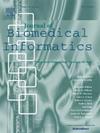为患有神经退行性疾病的老年人选择智能手表:研究人员避免隐藏陷阱的框架。
IF 4
2区 医学
Q2 COMPUTER SCIENCE, INTERDISCIPLINARY APPLICATIONS
引用次数: 0
摘要
背景:神经退行性疾病患病率的增加使老年人的护理需求复杂化。智能手表等传感技术是一种可用的解决方案,可以帮助解决老龄化带来的挑战。研究人员在选择试验设备和考虑这些技术在现实环境中的可持续性时,了解这些传感技术的可能性和缺陷至关重要。目的:本研究旨在揭示与智能手表在临床试验中的适用性相关的隐藏真相,这些临床试验包括患有神经退行性疾病的老年人,包括临终关怀和姑息治疗研究。方法:我们对智能手表的功能与用户和研究人员的需求进行了分析,并提供了研究团队应该考虑的隐藏费用概述。本文介绍了对11款智能手表的调查研究,这些研究是根据之前在临床研究中的使用情况和其他研究人员的建议选择的。结果:我们发现,费用、电池寿命、研究级与商业级设备的选择、数据管理、研究方法和参与者人口统计数据是为患有神经退行性疾病的老年人临床试验选择智能手表的主要因素。根据我们的研究结果,以及Connely(2021)、Mattison(2023)和Espay(2019)等人之前工作的概念,提出了一个修订后的框架,作为研究人员评估智能手表和未来传感技术的工具。结论:在未来的研究中,必须仔细考虑技术的适应性,特别是考虑到这是一个快速变化的领域。为临床试验选择智能手表的过程应该是深思熟虑的、仔细的,并包括跨学科的合作。本文章由计算机程序翻译,如有差异,请以英文原文为准。

Selecting a smartwatch for trials involving older adults with neurodegenerative diseases: A researcher’s framework to avoid hidden pitfalls
Background
Increased prevalence of neurodegenerative diseases complicates care needs for older adults. Sensing technologies, such as smartwatches, are one available solution which can help address the challenges of aging. Knowledge of the possibilities and pitfalls of these sensing technologies is of key importance to researchers when choosing a device for a trial and considering the sustainability of these technologies in real-world settings.
Objective
This study aims to uncover hidden truths related to the suitability of smartwatches for use in clinical trials which include older adults with neurodegenerative diseases, including end-of-life and palliative care studies.
Method
We perform an analysis of smartwatch features vs. user and researcher needs and provide an overview of hidden expenses which should be considered by the research team. Investigative research on 11 smartwatches is presented, selected based on previous use in clinical studies and recommendations from fellow researchers.
Results
We found that expenses, battery life, choice of research vs. commercial grade devices, data management, study methodology, and participant demographics are principal factors in selecting a smartwatch for a clinical trial involving older adults with neurodegenerative diseases. A revised framework based on our findings, and concepts from Connely (2021), Mattison (2023), and Espay (2019) et al.’s previous work, is presented as a tool for researchers in evaluation of smartwatches and future sensing technologies.
Conclusion
Careful consideration must be given to the fitness of technologies for future research, especially considering that this is a rapidly changing field. The process of selection of a smartwatch for a clinical trial should be thoughtful, scrutinous, and include interdisciplinary collaboration.
求助全文
通过发布文献求助,成功后即可免费获取论文全文。
去求助
来源期刊

Journal of Biomedical Informatics
医学-计算机:跨学科应用
CiteScore
8.90
自引率
6.70%
发文量
243
审稿时长
32 days
期刊介绍:
The Journal of Biomedical Informatics reflects a commitment to high-quality original research papers, reviews, and commentaries in the area of biomedical informatics methodology. Although we publish articles motivated by applications in the biomedical sciences (for example, clinical medicine, health care, population health, and translational bioinformatics), the journal emphasizes reports of new methodologies and techniques that have general applicability and that form the basis for the evolving science of biomedical informatics. Articles on medical devices; evaluations of implemented systems (including clinical trials of information technologies); or papers that provide insight into a biological process, a specific disease, or treatment options would generally be more suitable for publication in other venues. Papers on applications of signal processing and image analysis are often more suitable for biomedical engineering journals or other informatics journals, although we do publish papers that emphasize the information management and knowledge representation/modeling issues that arise in the storage and use of biological signals and images. System descriptions are welcome if they illustrate and substantiate the underlying methodology that is the principal focus of the report and an effort is made to address the generalizability and/or range of application of that methodology. Note also that, given the international nature of JBI, papers that deal with specific languages other than English, or with country-specific health systems or approaches, are acceptable for JBI only if they offer generalizable lessons that are relevant to the broad JBI readership, regardless of their country, language, culture, or health system.
 求助内容:
求助内容: 应助结果提醒方式:
应助结果提醒方式:


